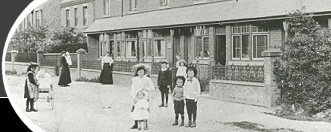 |
|
 |
Quorn Football Club – 36 Years of Village Football, by John L Field
In 1960, Jack Field, who had been associated with Quorn Football Club since 1932, wrote a 56 page booklet entitled ‘Quorn Football Club – 36 Years of Village Football’.
Jack moved to Quorn in 1923 as a young boy, and joined Quorn Football Club as a player in 1932. He played for them for 20 years before retiring and joining the committee as club secretary, a position he held for the next 35 years. His daughters remember that one of his duties was to ring in the Saturday match report to the Leicester Mercury. He had to do this from a nearby telephone box, until the family had their own phone installed at home! In 1987 he became the club’s treasurer and finally in 1997, after 65 years involvement, he retired. Jack continued to take an interest in the club until he became ill shortly before he died in 2006, aged 91.
Jack’s book not only provides a fascinating history of Quorn Football Club, but also contains many fascinating photographs, names, adverts and anecdotes.
Below are some ‘edited highlights’ from the book, relating to the history of the club. The full publication can be downloaded by clicking on the PDF link.
"The roots of Quorn Football Club lie in the early 1920s, with a team formed by the Methodist Boys Life Brigade in Quorn by Mr Williamson and Mr H Gamble. They originally played at different fields off Barrow Road. During the 1925/26 season a break was made with the Brigade and the club became known as ‘Quorn Wesleyans FC’, this time under the leadership of Mr Don Stirling, assisted by Tom Stockwell and Lol Heggs. The players not only played football but had to attend bible class at least twice a month and mark their own pitch out with ‘blobs’ of sawdust before playing a match!
The early 1930s saw the team move from a disbanded Sunday School League to the Loughborough Alliance. The team grew stronger and had more success. Their ground was now adjoining the Manor House Hotel on Woodhouse Road.
By the late 1930s the club was known as ‘Quorn Methodist FC’. They joined the Leicestershire Senior League in 1937 and as their success grew, they started to attract players from surrounding villages.
Despite the war, the team kept going and in 1939/40 they won the Leicestershire Senior Cup against Leicester City at Filbert Street. Thirteen busloads made the journey from Quorn to Leicester! Many of the surnames of the team will be recognised by those familiar with Quorn and its history. They included S Jones, E Kent, J Boyer, W Clish, E Watson, R Ward, W Pervin, C Wykes, J Lee, L Sutton, E Jollands and G Whitehouse. The following season Jack Lee was signed by Leicester City and eventually went on to play for England.
As the team became more depleted by the war, it had to move back to the Loughborough Alliance League. Their field was ploughed over, but they were allowed to play on Rawlins Grammar School ground.
When the end of the war came Quorn Methodist FC began to return to its former strength, and once more occupied Mr Pepper’s field on Barrow Road – although their HQ and changing rooms were at the Blacksmith’s pub on Meeting Street! The club was beginning to feel a need for their own premises. This was not the only change, and in 1951 Quorn Methodist Football Club was renamed Quorn Football Club.
In 1945 Mr W F Bent Beardsley had taken over the presidency of the club and with his guidance, steps were taken in the late 1940s to make a football ground out of Mr Baylis’s land behind the Cradock Drive Cricket Field, ie off Warwick Avenue. After many delays, during which time the club played on a field near the Manor House Hotel (where Loughborough Grammar School playing fields are now) and on Stafford Orchard (changing rooms at the Pig and Whistle), the land was finally purchased in 1957 for £350. A huge job then followed of levelling, seeding, building a pavilion – and of course raising the funds to finance all this. The new ground and pavilion was finally opened on 25th August 1960, by Marius Wright, the new club president. The ground was then surrounded by open land, as it was before the Warwick Avenue estate was built."
Since Jack Field wrote his book in 1960, Quorn Football Club has continued to go from strength to strength. During the 1990s they moved to a larger and more modern ground on Farley Way, complete with car parking, floodlighting and a large function room. The old ground was developed as a sheltered housing area for elderly people – appropriately named Sutton Close after the Sutton family, many of whom had a major involvement with the club over many years.
The museum team are grateful to Peter and Yvonne Brown for giving a copy of the book to the museum on long term loan. Thanks also to Val and Judith, Jack’s daughters, for their support and additional information.
Note – this is a large PDF file
| |
|
|
 |
Submitted on: |
2012-07-26 |
 |
Submitted by: |
Peter and Yvonne Brown, with additional information from Val and Judith (Jack and Phyllis Field's daughters) |
 |
Artefact ID: |
1669 |
 |
Artefact URL: |
www.quornmuseum.com/display.php?id=1669 |
|
|
 |
|
 |












